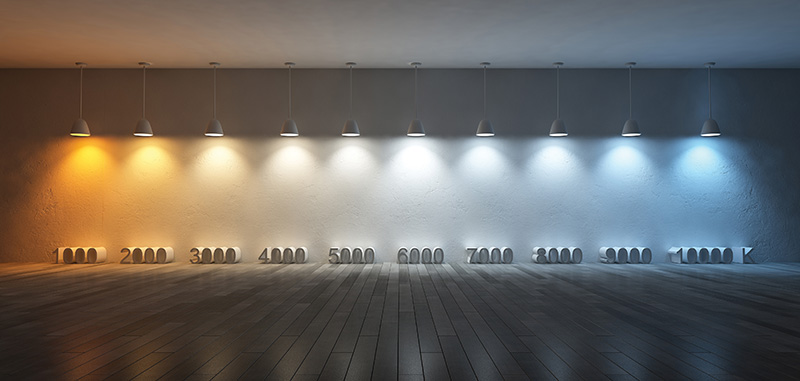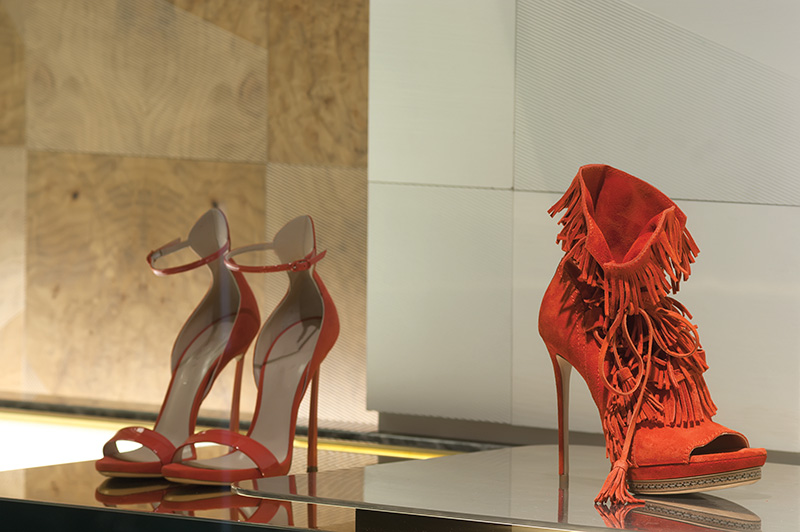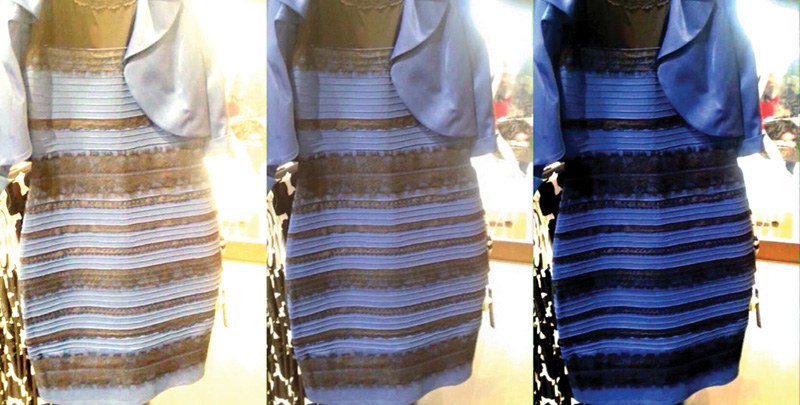LED lighting lets stores stay in tune with shoppers.
By Amy Silver
By now, you’ve heard about the many virtues of LEDs vs. traditional light sources, such as their lower energy consumption and much longer life, but LEDs also uniquely offer retailers the ability to engage with shoppers through color tuning. The latest LED products are dimmable and programmable, and enable users to vary the color and intensity of light to set scenes and enhance product appearance. By incorporating multiple color temperatures, intensities and tasks into a single luminaire, LED technology gives retailers the flexibility to continually update their interiors without having to change their lighting fixtures.
 Color Temperature and Color Rendering
Color Temperature and Color Rendering
To understand color tuning, and how to integrate the capabilities of these new LED products into your retail interior, you must first understand the basic color characteristics of light. There are two measurements commonly used to describe the color properties of a light source: color temperature (CCT) and color rendering (CRI). Color temperature, measured in degrees Kelvin, expresses the color appearance of light on a warm to cool scale. Lower temperatures (up to 3000K) appear red-orange to yellow-white; mid-range temperatures (3000K to 4600K) appear cool white; and higher temperatures (4600K and up) appear blue-white.
Color rendering measures how accurately a light source displays colors. This is especially important in retail applications in which color is used to sell a product. The closer the color rendering index (CRI) is to 100, the more natural and vibrant colors will appear. A CRI rating of 80 or above indicates that the source has good color rendering properties; there are many LED products on the market that offer a 90-plus CRI.
Color Tuning
 LED luminaires, such as panels, downlights and even replacement lamps are now available with color tuning modules that can shift white light from warm to cool using remote controls or software. They also offer significant improvements in dimming performance. With technology dubbed by manufacturers as “warm-on-dim,” “sunset dimming” or “dim-to-warm,” this new crop of LED luminaires replicates the smooth dimming performance of traditional incandescent and halogen lights by decreasing in color temperature as light output is lowered. Color subtly shifts from 3000K to 2000K (or lower) as light output is reduced to create a warm, inviting glow that retains high color rendering.
LED luminaires, such as panels, downlights and even replacement lamps are now available with color tuning modules that can shift white light from warm to cool using remote controls or software. They also offer significant improvements in dimming performance. With technology dubbed by manufacturers as “warm-on-dim,” “sunset dimming” or “dim-to-warm,” this new crop of LED luminaires replicates the smooth dimming performance of traditional incandescent and halogen lights by decreasing in color temperature as light output is lowered. Color subtly shifts from 3000K to 2000K (or lower) as light output is reduced to create a warm, inviting glow that retains high color rendering.
These color tuning features can be applied in a variety of retail applications to inspire sales and personalize the shopping experience. For example, light can be tuned to mimic the phases of natural daylight by shifting from 3000K (morning) to 4000K (mid-day) to 2700K (sunset). Shoppers are instinctively aware of these shifts in color temperature and connect them with the amount of time they have spent in a store. By adjusting light warmer or cooler, depending on the time of day, retailers can turn back the clock and encourage customers to stay longer. The longer customers stay in a store, the more likely they are to make a purchase.
Light color and intensity can also be optimized to help shoppers navigate through the store. Soft, warm light at the entrance welcomes shoppers in, while cooler, brighter light beckons them to the back of the store. Changes in color temperature and intensity can also be used to lure shoppers to specific displays or merchandise. Studies estimate that 90% of a shopper’s decision to try out merchandise is made on color alone, and the right light makes a product pop. That red dress becomes a must-have under a warmer color temperature, while a wall of blue jeans is more likely to catch the eye with accent lighting in a cooler color temperature.
 Color tuning can be especially effective in fitting rooms, where the majority of purchasing decisions are made. By combining tunable LED lighting with interactive control panels, shoppers can see garments in the lighting situations in which they will be worn. They can try on a cocktail dress in candlelight, or see how a bathing suit will look in broad daylight. Color tuning can even be applied to mirror lighting to minimize shadows and flatter skin tones.
Color tuning can be especially effective in fitting rooms, where the majority of purchasing decisions are made. By combining tunable LED lighting with interactive control panels, shoppers can see garments in the lighting situations in which they will be worn. They can try on a cocktail dress in candlelight, or see how a bathing suit will look in broad daylight. Color tuning can even be applied to mirror lighting to minimize shadows and flatter skin tones.
Natural-looking light provides the best fitting room and buying experience for the shopper, but the balance between truthful and flattering can also be tricky for retailers. If customers hate the way they look in the fitting room, they are not going to make purchases. But if they look too good, they may be disappointed when they try the garment on again at home, upping the likelihood they will return the item and cross a store off their list of regular stops.
Work With a Professional
There are many complex elements to consider in developing the optimal retail lighting plan: one that both inspires sales and reduces energy and maintenance costs. LEDs offer tremendous possibilities for retail lighting applications, and working with a lighting designer will ensure you receive the technology, techniques and equipment that are right for your goals and budget. A lighting professional can provide an audit of your store’s current lighting system and generate an ROI analysis that compares the proposed LED solutions to the existing fixtures, showing the energy and maintenance cost savings, available utility rebates, and time to payback. The International Association of Lighting Designers (IALD; www.iald.org) or American Lighting Association (ALA; www.americanlightingassoc.com) can connect you with a designer in your region.
— Amy Silver is the corporate communications manager for MaxLite, a leading provider of LED lighting solutions for the commercial building and residential markets. Based in West Caldwell, New Jersey, MaxLite has been committed to providing energy-efficient lighting products for more than 20 years and received the 2016 ENERGY STAR Partner of the Year – Sustained Excellence Award for its industry leadership. Email the author at [email protected].
